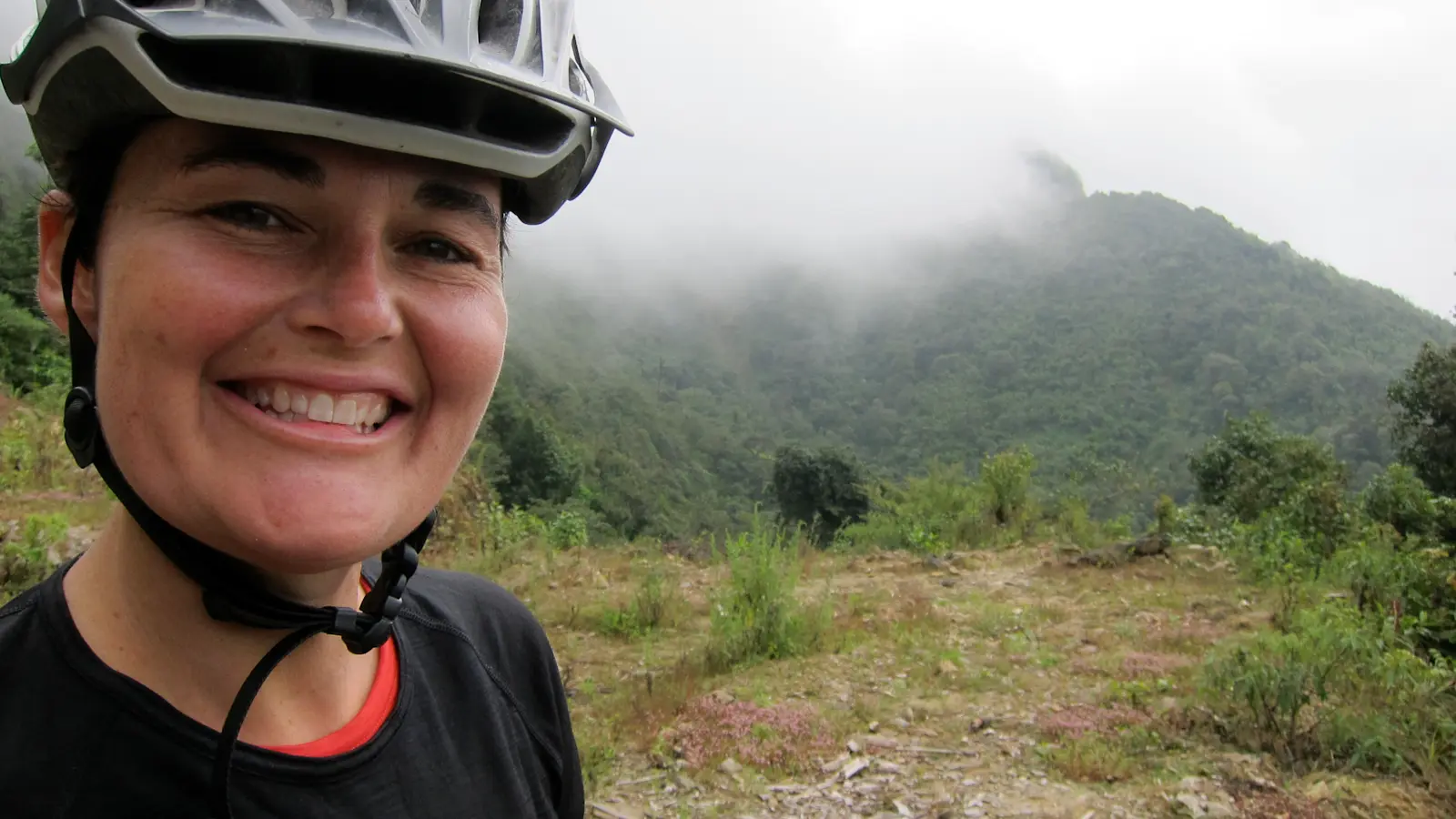DotWatcher.cc
Five Minutes With... Alex Hotchin
11 March, 2021
Alex took the time to talk us through the lengthy process of cartography and discussed her own adventures by bike. She's well known for her "Bikepacking the World" piece and has drawn many races since, including Badlands and the Victoria Divide. Alex has produced commissions for coffee and wine companies whilst also creating her own illustrations and printwork inspired by her own musings.
What’s the process from start to finish? I.e. do you sketch it out roughly, do you use an online version of the map first? To-and-fro between you and your client etc.
I refer to Google Earth in combination with a cycling navigation platform to set up the topography of the map, and to get to know the pattern of the landscape; where the rivers are etc. Google Earth has really good photos that are great for getting an idea about what parts of the landscape look like. I draw the topography first, then add the place names. The route is added next and, finally, all of the drawings and any additional notes. I draw every element by hand and then scan and assemble all the parts in Photoshop. Some maps might have up to 100 layers. So the images are always scalable and can have bits added and subtracted.
I will send the drawing to the client a few times during the process for their feedback.
When you’re asked to draw your maps, from where do you get the inspiration for it all?
Every project is different, sometimes I get a very prescriptive brief and other times it can be very loose. Either way, I find that I still do a lot of my own research as I like to add birds, plants or unusual characteristics of the part of the world I am drawing.
You talk about your Big Bike Trip from Scotland to Cambodia, can you tell us a bit more about that? How has this trip influenced your work since?
In 2011-12 I rode my bike from Scotland to Cambodia and navigated the old fashioned way by using paper maps. I didn’t take a GPS or phone. I loved the challenge of finding my way using the contours and landmarks. I got lost a lot, but there was great reward in asking people directions and interpreting their responses. The beauty in being lost is you gain interactions with others and the experience of being thrust into the unknown and all that comes with that.
When I returned home I made some drawings about that trip (which were the first maps I ever made). They were an attempt to explain what I had experienced and so they became story drawings. It seemed natural that they be maps; layering stories over place.
Are there any outstanding regions you’d like to illustrate but haven’t yet had the chance?
I’ve drawn a lot of mountainous routes so I guess it would be nice to draw some desert scapes. Maybe something from the Middle East.
Has any of your work influenced bike trips both in the past or potential trips in the future?
Almost everywhere I draw I fall in love with and I yearn that I might be able to visit one day. When I drew the “Bikepacking the World” map I did a lot of research about bike rides far and wide. I decided then that if I could choose the next place to take my bike it would be the Caucasus Mountains in Georgia. Since then I have drawn specific routes in a lot more detail, studying almost every mountain, valley, gorge and coastline. I’ve since had the Baja Divide at the top of my “want to visit” list, and then Badlands in Spain. But at the moment I am drawing 10 maps of the Americas and I’m studying every part of the Altiplano and thinking that this is the most surreal and beautiful place I have ever drawn, so maybe that’s next on my list now!
When I made my bike trip I knew very little about some of the countries I traveled through, like Iran or parts of Central Asia. But I would love to ride some of the routes I have drawn in such detail. I’d be interested to see if they felt familiar.
Have your map reading skills improved as a result of your work?!
Most definitely. Although I still have problems with a map if north is not up the page.
What’s the trickiest part of illustrating that might surprise some people?
Sometimes it takes a little while at the beginning to find my bearings - but after a while everything just falls into place, and sometimes when I am drawing a place it really feels like we know each other well. Things have become easier the more that I do.
You can find more of Alex's work on her website: alexhotchin.com.

